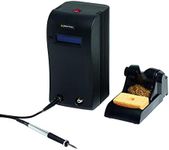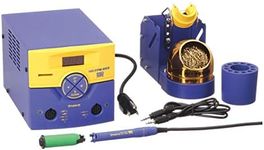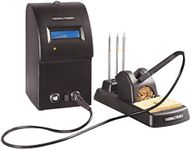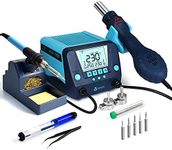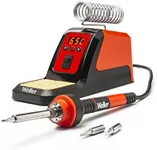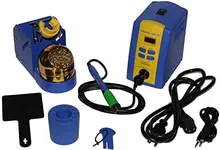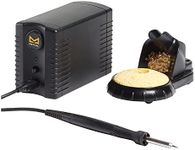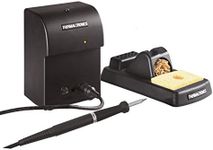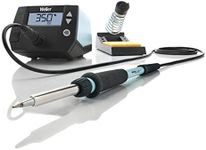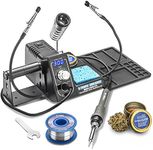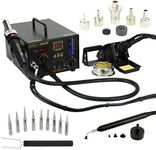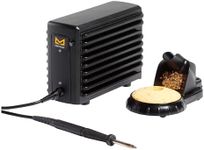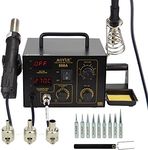Buying Guide for the Best Soldering Stations
Choosing the right soldering station is important for anyone interested in electronics, DIY repairs, or crafting. The right station can make your work easier, safer, and more precise. When picking a soldering station, it's important to think about what kind of projects you'll be working on, how often you'll use it, and what features will make your work more comfortable and efficient. Understanding the key specifications will help you find a soldering station that matches your needs and skill level.Power (Wattage)Power, measured in watts, tells you how much heat the soldering station can generate. Higher wattage means the station can heat up faster and maintain temperature better, especially when working on larger components or thicker wires. Soldering stations typically range from about 30W to 80W or more. For small electronics and delicate work, lower wattage (30-50W) is usually enough. For more demanding tasks, like soldering larger connectors or working with heavy-duty materials, higher wattage (60W and above) is better. Think about the size and type of projects you plan to do most often to decide what power level is right for you.
Temperature ControlTemperature control lets you set and adjust the heat of the soldering iron. This is important because different tasks and materials require different temperatures for best results and to avoid damage. Some stations have fixed temperatures, while others let you adjust the temperature within a certain range, often between 200°C and 480°C. If you work with a variety of components or sensitive electronics, adjustable temperature control is very helpful. For simple or occasional tasks, a fixed temperature might be enough. Choose based on how much flexibility you need for your projects.
Tip Compatibility and AvailabilityThe tip is the part of the soldering iron that touches your work, and different tips are suited for different tasks. Some stations only work with specific tip shapes or brands, while others are compatible with a wide range. It's important to check how easy it is to find replacement tips and whether you can get the shapes you need, such as fine points for small electronics or chisel tips for larger joints. If you expect to do a variety of work, look for a station with good tip compatibility and easy access to replacements.
Heating Technology (Analog vs. Digital)Soldering stations can use analog or digital technology to control temperature. Analog stations use simple dials and are usually straightforward to operate, while digital stations have displays and more precise controls. Digital stations often offer better temperature stability and accuracy, which is useful for detailed or sensitive work. If you value simplicity, analog might be enough, but if you want more control and feedback, digital is the way to go. Consider your comfort with technology and the level of precision you need.
Safety FeaturesSafety features can include things like automatic shut-off, anti-static protection, and heat-resistant stands. These features help prevent accidents, protect your components, and make your workspace safer. If you plan to leave your station on for long periods or work with sensitive electronics, look for stations with these safety features. Think about your work habits and environment to decide which safety features are most important for you.
Ergonomics and Build QualityErgonomics refers to how comfortable and easy the soldering iron is to hold and use, especially during long sessions. Build quality affects how durable and reliable the station will be over time. Look for a soldering station with a comfortable grip, a stable base, and sturdy materials. If you plan to use your station frequently or for long periods, ergonomics and build quality become even more important. Try to choose a station that feels solid and comfortable for your hand size and working style.
